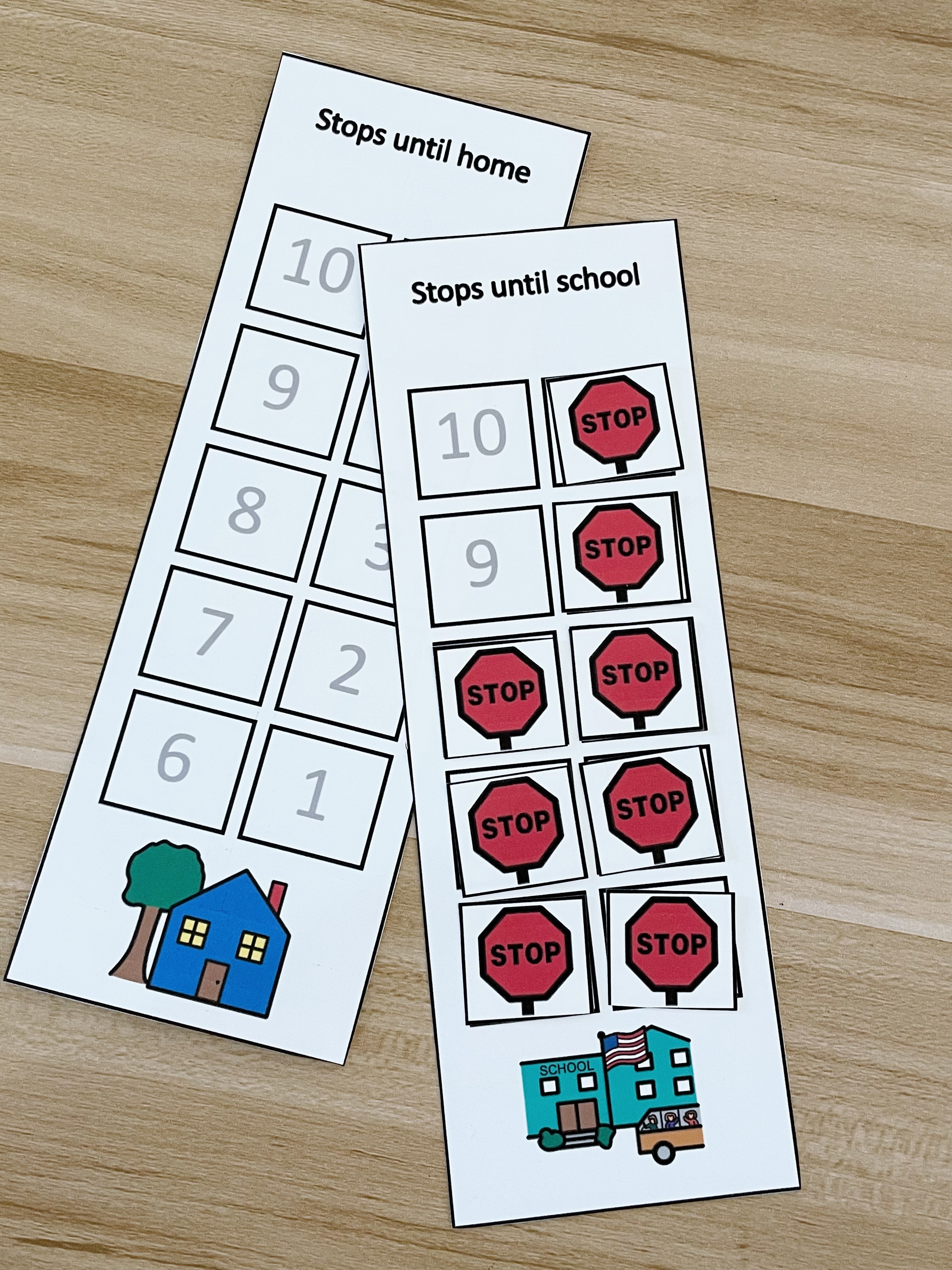6 Must-Haves for Students Who Struggle on the Bus

Picture this: You’re on a bus for one hour surrounded by other adults who are yelling back and forth to one another. You forgot your phone so you don’t know how long you’ve been riding for or how long you have left. You have nothing to do but sit and stare at the seat in front of you, ruminating in your thoughts...and oh, it's as loud as can be.
Could the bus ride truly be a good time? Maybe, maybe if you have a great social skills, problem-solving abilities, frustration tolerance, came prepared with all the entertainment, are fully aware of how many stops the bus has left, can tolerate the loud noise, have the means of appropriately communicating your wants and needs to the bus staff…then yeah, maybe riding the bus might not be so bad. But, this is rarely the case for many of our students.
For our students with disabilities, trauma, or challenging behaviors - heck, for lots of other kids - the bus ride can be torturous and one of the most stressful parts of a child's day. Leaving the comfort and familiarity of their home and riding to school where demands are high isn't easy. The transition itself can be a challenge; combine this with a plethora of other en-route stressors, and you can have yourself one very difficult haul to school.
What things might make the bus ride so difficult for some of our students?
From an un-empathetic perspective, it looks simple: just sit there, mind your own business, and wait until you get to school. Easy peasy. But alas, there are indeed many things that can contribute to a difficult ride:
- Loud noises and sensory overload
- Having to wait
- Unknown schedule or amount of bus stops left
- Change in routine
- Lack of leisure skills
- Difficulty to coping with or tolerate frustration
- Struggles with peer conflict resolution
- Difficulty communicating wants and needs
What we need to remember:
Behavior serves a purpose. It meets a need. Whether the need is to escape internal feelings of stress, navigate a social situation, gain access to an item or a person's attention, there is a why behind that behavior. If your student is struggling, identifying the function or purpose behind the behavior will help you identify the most appropriate support. By teaching some new skills and putting some simple accommodations in place, we can reduce our student's anxiety when in transit.
Here are 6 must-haves when supporting students who struggle on the bus:
1. Predictability
- Seat the child in the same seat every day
- Tell/show them how many stops are left using a schedule
- Teach them about different routes, accidents, and delays
2. Regulation Tools
- Provide headphones or earbuds
- Seat them away from loud or disruptive peers
- Make sure their vest and clothing is comfortable
- Give movement opportunities prior to riding if possible
- Providing calming activities and tools staff can hand out when needed (or allow the child to keep with them for the duration of the ride so they can access them independently when needed)
3. Visual expectations
- Explicitly teach the bus expectations (differentiate these as needed)
- Instruct, model, and practice the skills necessary for bus success. This can be done in the classroom or ideally if the driver can keep the bus parked at school for a bit while you take our students out to practice.
- Post a visual of the expectations on the bus in numerous places
4. Engagement
- Teach and integrate leisure skills for the bus (games, toys)
- Have the bus drivers talk to the students about their interests
- Make sure drivers actually greet them
5. Reinforcement
- Teach bus staff how to utilize behavior-specific praise for students for whom may benefit.
- Show bus staff how to honor communication attempts and assist students in getting their needs met. Consider showing them the basics of how to assist students using communication systems.
- Consider the use of a self-monitoring form
- Ask for positive bus reports when possible and celebrate when students are using a new skill on the bus!
6. Response plan
- Teach the bus drivers to respond, rather than react by stay calm amidst problem behaviors. Share with the bus staff ways to help the students regulate and prompt alternative behaviors instead. Write out exactly what they should say and do!





